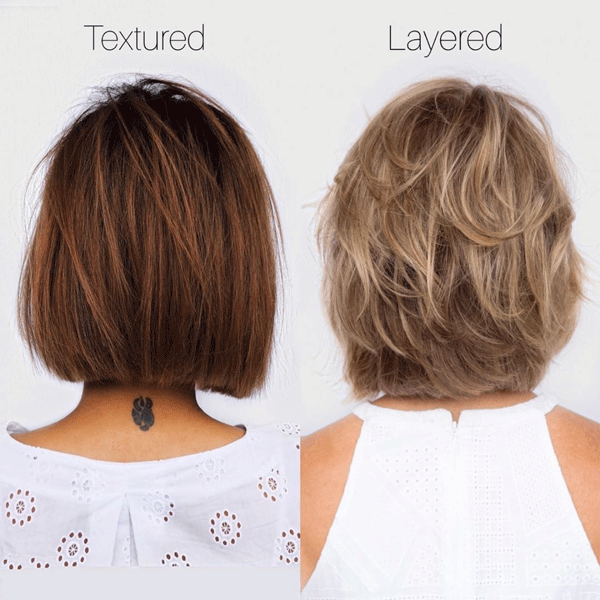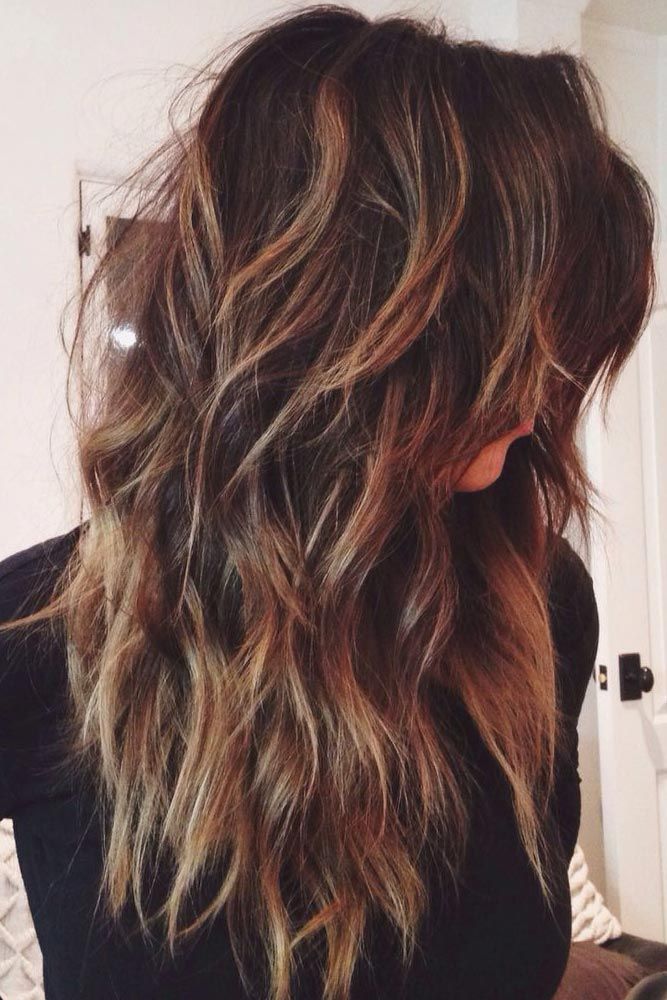Table Of Content

You’ll want to work with a clean head of hair when cutting layers. Otherwise, grease and dirt could interfere with the quality of your cut. You don’t need to attend beauty school to create head-turning layers in your hair. Instead, the steps below will help you create professional-looking layers.
How to Cut Your Own Hair: 10 Expert Tips and Video Tutorials
While stylists will warn you not to attempt some hair-shaping moves at home, face-framing layers can be achieved without leaving your bathroom. Herewith, professional hairstylist Ashley Rubell shares an illustrated, 10-step guide that will teach you how to cut face-framing layers at home. Plus, celebrity hairstylist Graham Nation adds tips for curly girls.

Cutting the Back Section of Hair
It's important to create an even base line that goes horizontally so that you have a reference point when creating the rest of the cut, as well as the layers. Comb each section of hair out before cutting it to ensure you're making even cuts, and make the cuts at an angle to form layers. The "bixie" haircut combines a bob and a pixie — it's a smidge longer than a pixie but not quite chin length, as most bobs are. It's traditionally a long layered haircut but can also be customized into a medium layered haircut with bangs if that's more your style.
Short Fine Hair: Soft Layers
“And if they are still nervous, just turn them around and tell them it’ll be a surprise! That means half your hair will fall to the right and the other half to the left.
While cutting one side will always feel more natural, slide cutting prevents the other side from feeling extremely foreign and more prone to significant mistakes. Slide cutting will give you a perfectly imperfect gradation as a base for your face-framing layers. Use your cutting comb to direct all the hair forward, over your face, and pinch out one tiny subsection at a time, each beneath the other. Taking small subsections and a gentle approach with this cutting method will give you the most control over what you're doing as a beginner. For this particular cut, I suggest a method called slide cutting. Slide cutting is a gentle approach that enables flexibility and less room for error.
Layering Guide: How To Cut & Style With Confidence
It goes without saying that different hair types require different techniques. If you have afro-textured or curly hair and like to wear it natural, do not cur your own hair in straight lines – is not going to have the desired effect. Instead of trying to tame your curls into one single length, go with the flow of your hair. It’s a common complaint of clients with thick hair that they feel heavy or weighed down. The biggest thing you should consider before getting layers (beyond your hair type, that is), is how much time and effort you’re willing to put into styling your hair.
Things You’ll Need
Getting a perfectly even DIY cut can be tricky, but this tried-and-true method for achieving layers at home is great for beginners. Smooth hair into a ponytail at the top of the hairline near the forehead (hence the "unicorn ponytail" method), pull hair forward and snip ends. The sharper the angle, the more drastic the face-framing layers will be. Increase control, add moisture and detangle throughout your entire haircut by using a leave-in conditioner as a cutting aid. The Editorial Team is comprised of several freelance hair enthusiasts that share a love of hairstyles, haircare, and hair products.
"Some shorter shag cuts can be high-maintenance, bringing you to the salon every four to six weeks," says Johnston. Though layers can typically help add heft and texture to thin hairstyles, they're just as gorgeous on tightly coiled curls. "Curly hair can vary throughout the head, so observe the consistency of the curls to determine what layering is best," Johnston says. From the classic chops to the trendiest new haircuts of 2024, there are so many options to choose from. Velasquez says that shaggy layers are a great way to give natural curls movement and life. This cut also removes any heaviness that may way your curls down.
Shattered Layers Are the Latest Anti-Volume Haircut - InStyle
Shattered Layers Are the Latest Anti-Volume Haircut.
Posted: Wed, 10 May 2023 07:00:00 GMT [source]
Why the contour cut is the most dynamic haircut of 2023 - Marie Claire UK
Why the contour cut is the most dynamic haircut of 2023.
Posted: Sun, 05 Nov 2023 07:00:00 GMT [source]
As mentioned above, the best layers for you will depend on your hair type, face, shape, and commitment to styling and maintenance. If you’re not sure what kind of layers will be most suitable, scroll through your socials. Velasquez likes square layers for hair that grazes just at the collarbone. Kim adds that this soft layering will help give fine hair the illusion of volume. For afro-textured hair, keep your hair dry, with no products, and brush it out to its fullest. Now, trim damages and split ends of your hair without stretching any of it out with your fingers, a little like cutting a hedge.
Short layers can work regardless of your hair type, texture, face shape, and beyond. Layers are the ultimate versatile cutting technique, amping up styles for those with thin hair, add body to straight pieces, and even add depth and volume to natural curls. "Layers are great for adding softness and movement while showcasing texture," says Adrianne Johnston, Stylist at Maxine Salon in Chicago.
Once you’re happy with the line, chop the bulk of the loose hair off with scissors and then shave it with clippers. Once you’ve shaved the bottom section, let some more hair down and shave the next section with a slightly longer clipper attachment. Finally, let the top of your hair out and cut that with the longest clipper attachment, or just trim with scissors, letting hair fall in the preferred direction.

If you like to style your hair at night, blow it out, then wrap your strands into a TikTok-beloved overnight blowout. Some of the best tools to do so include the Overnight Blowout Velvet Rods, $44, Kitsch Heatless Curling Set, $15, and The Sleepy Tie, $29. Come morning, your hair will look professionally blown out. “You just feel lighter without all that hair weighing you down,” she explains. The most important part of this step is making sure that the line between the section that you’ve tied up and the hair you’ve left down is super straight and symmetrical. Do not rely on your senses and use the mirror to guard that.
We love how subtly they're done here on this sleek, chin-grazing bob. Luxe layers will help you achieve max volume and drama if you're into the blowout look. Take your balayage or highlights up a notch and give your color the spotlight by getting a piecey, layered style like this one. This is a perfect example of how they can pump up your look for ultimate fullness, depending on your texture. “Regular trims, every six to eight weeks, prevent layers from looking uneven or losing their intended shape,” Rosales says.
Don’t worry, you don’t have to go to any specialist shops, you can find most of these in your local beauty store. If you like to toss your hair around or switch up your parting frequently, settle on a center parting. Once you've identified and cleaned up your parting, use the edge of your cutting comb to section your hair from about half an inch behind the ears. Going slightly past the ear line should give you a bit from the back length so that you're cutting to meet the longest point of the hair. Comb the hair forward and use your clips to section off the rest of the hair.
"You need enough hair and density to pull off a layered shag," says Johnston. "The more movement and piecey parts, the better, without looking stringy." These are the top mistakes stylists make cutting layers and some pro tips to avoid choppy or thin layers, holes and harsh lines.


No comments:
Post a Comment